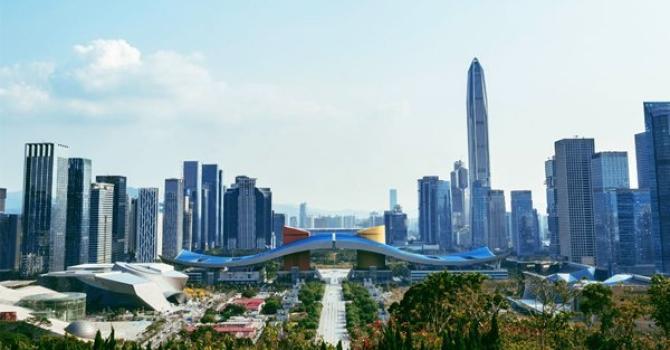SCMP: As environmental standards for shipping evolve, the Hong Kong government’s role should also
For Hong Kong’s shipping industry to keep pace with evolving international emissions standards will require more coordination, both among its bureaus and with the mainland
The maritime industry is a global business, with Hong Kong being not only a major port but also a shipping hub with a large presence of businesses serving this sector. Apart from shipowners and ship liners, there are also ship managers, terminal and barge operators, cruise ship companies, ferry service operators, charterers, ship brokers, seafarers, marine fuel suppliers and other service providers such as financiers and lawyers.
The International Maritime Organisation (IMO) regulates international shipping. Major issues for the industry include reducing pollutant emissions and decarbonisation. For example, the IMO requires shipping fuels to meet a global sulphur cap of 0.5 per cent by 2020; encourages ships to reduce nitrogen oxide; and for global shipping to reduce its carbon emissions by 50 per cent by 2050.
These mandates affect Hong Kong and the mainland.
Firstly, Hong Kong became the Asian leader in 2013 by adopting a new policy to require ocean-going vessels, such as container and cruise ships, to switch to a cleaner fuel while at berth. The law to require 0.5 per cent sulphur fuel came into effect in 2015.
Secondly, Hong Kong and mainland China cooperated to define new fuel switching regulations, and the mainland created three domestic emissions control zones for ships that became effective from 2019. Ships entering the waters of the zones in the Pearl River Delta, Yangtze Delta and Tianjin area have to switch to the 0.5 maximum sulphur fuel ahead of the IMO mandate.
These efforts have brought measurable and significant improvement to air pollution. However, with the IMO global sulphur cap coming into force soon, Hong Kong and the mainland must go further still if they wish to maintain their leadership positions in Asia. The respective authorities are considering requiring ships to switch to 0.1 per cent maximum sulphur fuel before 2020. The earlier the authorities can make the decision, the better, since other stakeholders, such as shipping companies and bunker suppliers, need to get ready.
Thirdly, in light of the vision for the “Greater Bay Area” plan for the region, to be a leader in green living, Hong Kong, Macau and Guangdong should cooperate on a much bigger plan for green ports and green harbours.
The technology is now available for electric and hybrid ferries. There are large numbers of ferries serving the bay area. The authorities could work with ferry operators on a scheme to replace old ferries with new ones. Setting a plan for reducing emissions from barges should work too.
As for ocean-going vessels, the shipping industry is introducing new engines to reduce nitrogen oxides, and some ports are giving incentives to such ships to help the industry make the necessary investments. The Greater Bay Area can be among the ports to consider this too.
Furthermore, ocean-going vessels, including cruise ships powered by LNG, are being built, including in China. In the next five years, the cruise business along the Chinese coast is expected to grow substantially. Hong Kong will need to be able to provide LNG bunkering facilities if it is to remain relevant as a forward-looking port. Singapore is ready in this pursuit but Hong Kong is not.
Since the two local power suppliers in Hong Kong are jointly building an LNG-receiving facility to supply LNG for electricity generation, which is a part of Hong Kong’s plan to reduce carbon emissions, the facility can be designed to also provide LNG to ships. Indeed, it would make no sense for the government not to include this as part of the receiving facility.
Hong Kong’s disadvantage is there is no port authority which can mastermind a comprehensive, transformative plan that can dovetail with IMO and international trends, provide for new fuels bunkering, and plan for lowering pollutant emissions and the carbon footprint of ships and port activities. The consultative Port and Maritime Board does not appear to perform such a function.
The government has also not used its membership at the IMO to participate in the global debate on environmental improvement and decarbonisation. It is a great wasted opportunity that environmental officials do not attend the many IMO meetings where such matters are discussed. It is a common practice among other member jurisdictions for officials with different disciplines and responsibilities to attend such meetings at the appropriate times.
The Transport and Housing Bureau and Environment Bureau have bifurcated responsibilities in shipping, port regulation, fuel and energy policy, pollution control and climate change. They would serve Hong Kong and the bay area well by working out a new approach that suits the new era. The mainland is also a member of the IMO, and China as a major shipping and shipbuilding nation has a clear interest in playing a role in the decarbonisation and transformation of the global maritime industry.
The Hong Kong-based shipping sector is interested in seeing the two bureaus cooperate rather than remain in their ineffective silos. The secretary for transport and housing visited Denmark and Norway recently and have seen for himself cleaner ferries and vessels operating. Hopefully, the two bureaus can put forward a strong local – as well as bay area-wide – policy to realise an ambitious plan for green ports and harbours.
Christine Loh is Chief Development Strategist and Adjunct Professor at the Hong Kong University of Science and Technology’s Division of Environment and Sustainability.
This article appeared in the South China Morning Post print edition as: Greater things in sight
Link to SCMP article: https://www.scmp.com/comment/insight-opinion/hong-kong/article/2186087/greater-bay-area-chance-hong-kong-show-it-hasnt



